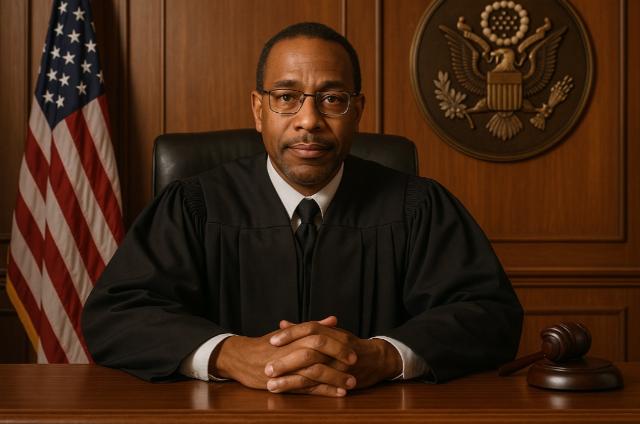The Supreme Court has reined in dangerous extensions of judicial power
In Trump v. CASA, Inc., the U.S. Supreme Court reaffirmed a foundational principle of constitutional law: that federal courts are empowered to resolve disputes between parties, not to dictate national policy from the bench. Specifically, the Court ruled that nationwide judicial injunctions—where a single district judge blocks a federal policy for the entire country—are not constitutionally authorized under Article III.
While this may sound like a radical shift, it’s actually a return to the traditional boundaries of judicial power as envisioned by the Founders and practiced for most of American history.

A judge exercising restraint. Image created using ChatGPT
What Are Nationwide Injunctions?
A nationwide, or “universal,” injunction is a court order that stops the federal government from enforcing a law or policy not just for the plaintiff, but for everyone—nationwide. These types of injunctions gained popularity in the late 20th and early 21st centuries, especially in high-profile cases involving immigration, environmental policy, healthcare, and executive orders.
What began as rare judicial exceptions became, in recent years, almost routine: a single district judge in one jurisdiction halting federal policy across all fifty states before any appellate court could weigh in.
The Court’s Rationale
The Supreme Court has grown increasingly skeptical of this trend. In decisions like United States v. Texas, the majority emphasized that Article III of the Constitution limits federal courts to deciding actual “cases or controversies.” That means issuing relief for the parties before the court, not issuing sweeping national edicts.
Nationwide injunctions raise serious constitutional and practical concerns:
- They encourage forum shopping. Plaintiffs can strategically file in jurisdictions likely to grant the broadest relief.
- They short-circuit the appellate process. If one district judge issues a nationwide halt, it may prevent other courts from examining the same issue independently.
- They create inconsistent national policies. One district judge may halt a policy at a nationwide level, while another in a different circuit upholds it, leading to confusion and legal uncertainty.
- They expand judicial power beyond its constitutional scope. Courts are not meant to function as national policy boards.
Does This Mean the People Lose Protection?
Not at all. The judiciary remains a powerful check on executive overreach—but within the guardrails of constitutional authority.
Here’s how:
- Injunctive relief still applies to plaintiffs. Courts can and do stop government actions as they affect the individuals or organizations who bring a lawsuit.
- Class actions are still valid. If a class is properly certified, a court can issue relief for all members of that group—sometimes affecting thousands.
- Judicial precedent shapes national policy over time. As appellate courts and the Supreme Court weigh in, their decisions set binding precedents that apply to everyone.
- Multiple lawsuits can lead to systemic change. Different plaintiffs in various jurisdictions can challenge the same policy, leading to a natural and robust development of the law.
A Return to Constitutional Norms
For most of American history, courts did not presume the authority to issue nationwide injunctions. Judges resolved disputes between parties, and the legal system allowed change to spread through precedent, not judicial fiat.
The modern expansion of nationwide injunctions was, in many ways, a symptom of political polarization—courts stepping in to block controversial policies immediately and broadly. The Supreme Court’s recent decisions reflect a desire to restore judicial modesty and respect for the separation of powers.
Conclusion
By rejecting the routine use of nationwide injunctions, the Court is not weakening judicial review—it is reaffirming the limits that keep our constitutional system balanced. The courts remain guardians of individual rights, but they are not national referees for every political controversy. The protection of the people is still intact—but it now operates through a more deliberate and constitutionally faithful process.





